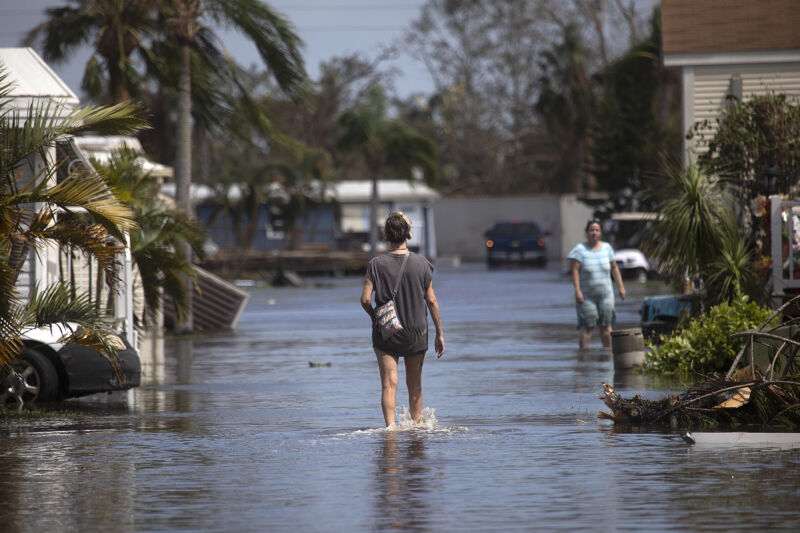Filthy floodwaters from Hurricane Ian drove wave of flesh-eating infections

Enlarge / A resident of Gulf Air mobile home park walks through floodwaters from Hurricane Ian through her neighborhood near Fort Myers Beach on September 29. (credit: Getty | The Washington Post)
In the devastating aftermath of Hurricane Ian, some of Florida's hardest-hit areas are facing a new threat-a wave of flesh-eating bacterial infections that can crest in sewage-contaminated floodwaters.
In the weeks since the natural disaster, authorities in Florida's Lee County-which surrounds Fort Myers-have seen a surge in potentially life-threatening Vibrio vulnificus infections. The bacteria are known to lurk in warm coastal waters but fester amid pollution, particularly sewage spills.
This year, Lee County tallied 29 infections-27 identified in the aftermath of the hurricane-as well as four deaths. For comparison, Lee County recorded just five cases and one death in 2021, and zero cases in 2020. Florida overall has recorded 65 cases and 11 deaths in 2022, including those from Lee County. The state total is nearly double the totals from the past two years.